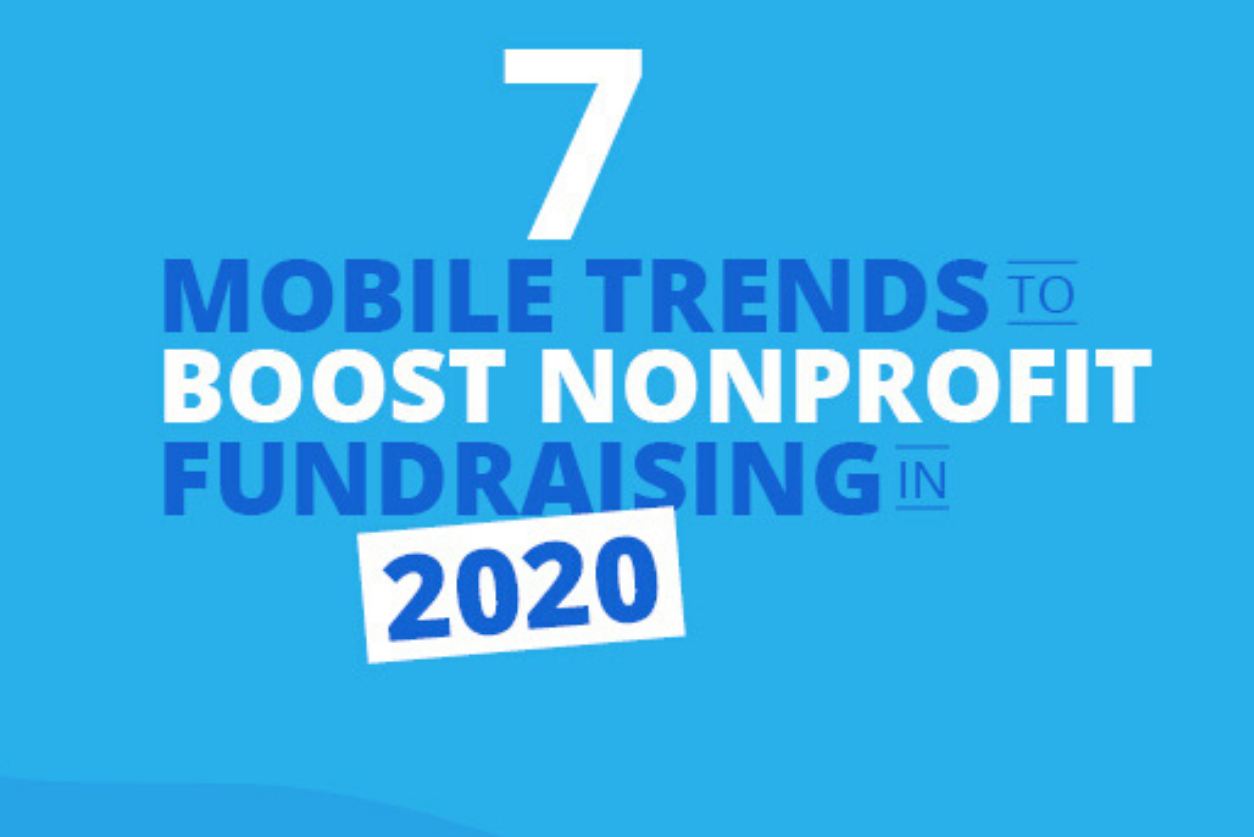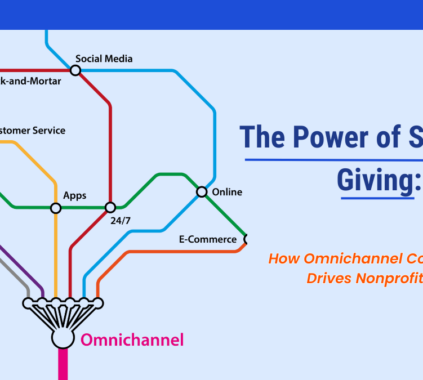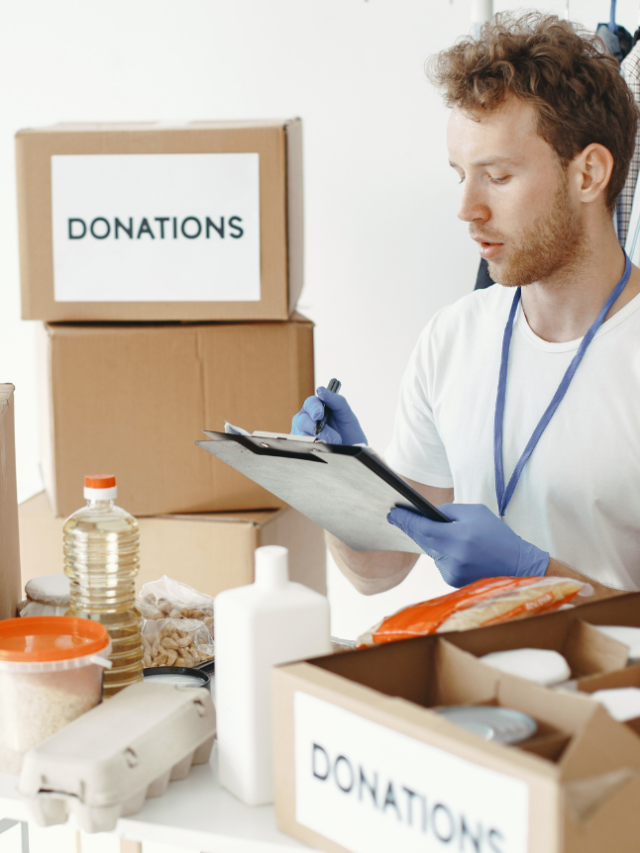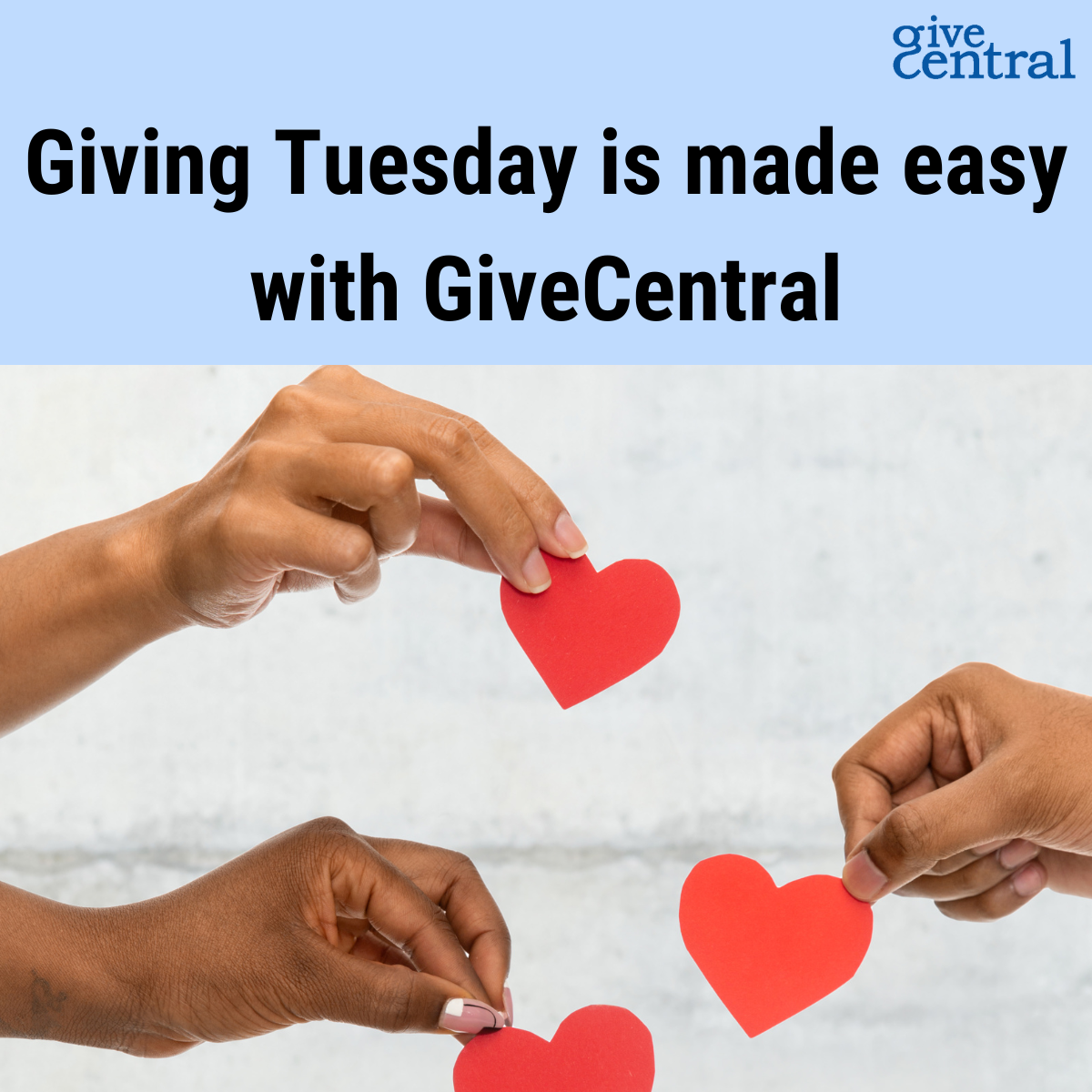As a nonprofit professional, you’re probably well-versed in fundraising best practices. But how much do you know about mobile fundraising?
Mobile fundraising is a broad and pretty all-encompassing term that spans from text-to-give to mobile email and beyond. And quite frankly, it’s the future of fundraising. Now, you might be wondering what this means for your nonprofit.
It means that it’s time to check out these top seven mobile trends that will take your nonprofit fundraising to the next level, even in the midst of a difficult time. Here’s a quick glance at the topics we’ll be discussing in this article:
#1. Text-to-give
#2. Email fundraising
#3. Fundraising thermometers
#4. Peer-to-peer fundraising
#5. Mobile-friendly donation pages
#6. Social fundraising
#7. Mobile acknowledgements
When leveraged effectively, mobile fundraising can bring in substantial revenue for any nonprofit looking to further their charitable mission. Let’s get started!

#1. Text-to-Give
Once upon a time, large nonprofits were the only ones who had access to text-to-give technology.
Luckily, next generation text-to-give platforms have broken down barriers, enabling text-to-give as one of the top ways that any sized nonprofit can fundraise on-the-go.
With an optimized text-to-give platform, there’s no prerequisite application process, so your nonprofit will see all of the funds you raise quicker than ever before. And, in order to give to your organization, donors need to simply text a memorable, predetermined keyword to your mobile giving number.
Presto! They’ve just given to your organization with two clicks. It really is as simple as that: text-to-give is an easy, effective, and efficient way for your donors to give on the go.

#2. Email Fundraising
Your nonprofit likely already has a solid email list, and you might even send out emails on a regular basis. But have you truly optimized your emails in order to reach the most mobile donors? And what exactly does it mean to design your email for mobile?
Here are a few tips for making the most of your mobile email strategies:
- Ensure that your emails load appropriately on mobile. Your mobile donors shouldn’t be pinching, zooming, and scrolling excessively to read your content.
- Eliminate massive text blocks. You only have a few seconds to grab the attention of your donors. Use those seconds wisely by providing only the most pertinent information about your fundraiser.
- Make your pictures meaningful. A picture really is worth a thousand words, and donors process images twice as quickly. Choose an image that really speaks to your organization’s mission, and you’re bound to have twice as much success.
Rethink your organization’s email fundraising strategy by optimizing for mobile. Otherwise, you risk losing out on valuable potential revenue due to donor abandonment and poorly designed outreach tactics.

#3. Fundraising Thermometers
Did you know that fundraising thermometers are one of the most effective visual aids available to nonprofits?
As previously mentioned, images are crucial to fundraising success. Powerful images can include photographs, infographics, clipart, and visual demonstrations— like a fundraising thermometer.
While some fundraising thermometers require your nonprofit to manually update your total every time a donation is made, there are others that automatically refresh with each donation.
So why are fundraising thermometers so effective?
Simply put, people enjoy being a part of a winning team.
Digital fundraising thermometers can easily be embedded within your nonprofit’s website, donation forms, emails, social media posts, and more. And when supporters see that your fundraising thermometer is steadily rising, more individuals feel the need to get in on the action and be a part of your successful fundraising endeavor.
They’re also really handy for your nonprofit team to keep track of your progress and set tangible goals. As you watch your own thermometer fill up, you’ll feel a heightened sense of accomplishment and an increased drive toward your goal.
Fundraising thermometers are fantastic tools for inspiring donors to give and for keeping your nonprofit on track with its goals. Check out this handy guide to fundraising thermometers from Snowball for more information (and a free template!).

#4. Peer-to-Peer Fundraising
Another easy-to-use fundraising trend for this year is mobile peer-to-peer campaigns.
Peer-to-peer fundraising takes your nonprofit’s advocates and turns them into powerhouse fundraising machines— in the best way possible, of course!
It’s actually really straightforward. All you need to do is to:
- Gather your nonprofit’s most passionate, vocal, and involved members.
- Supply them with the necessary tools to mobile fundraise on your behalf (personalized fundraising page, social media templates, etc.).
- Encourage them to reach out to their social networks (friends, family, coworkers) to share your mobile fundraising efforts.
You can also boost your mobile peer-to-peer fundraising by hosting a live (or virtual!) event and encouraging attendees to spread the word about your mobile fundraiser to their family and friends.
Not only will you garner more donations than you could have otherwise, you also have the possibility of gaining new followers, devoted volunteers, and recurring donors. You never know who your existing donors know! They might introduce your next greatest supporter to your cause.

#5. Mobile-Friendly Donation Pages
Chances are, your nonprofit already has an online donation page. To take that existing donation page to the next level, you might consider:
- Upgrading your portal to be mobile-responsive.
- Reducing the number of required fields.
- Adding multiple levels of giving opportunities.
- Making sure your branding is consistent.
- Increasing the size of your buttons and text.
If you follow these best practices, your nonprofit’s mobile donation page could help propel your organization to new heights. Check out this guide to optimal donation page design from Morweb for more best practices and top examples.
With so many people finding your organization’s donation page on their mobile devices, it’s about time to upgrade your existing page to be mobile-friendly and remove any possible barriers to donations!

#6. Social Fundraising
It’s been said many times before, but social media is everywhere. After all, it’s one of the most pervasive (and persuasive) forms of media in the modern world. Facebook is the most downloaded app on the mobile app store, and not far behind it are Twitter, Instagram, and Snapchat.
But what does all of this mean for your nonprofit?
Well, it means that social fundraising needs to become a part of your nonprofit’s overall strategy if you want to reach your donors where they are. After all, many social media users interact with the platform from their mobile devices. So how can your organization further take advantage of these various social media sites to boost mobile fundraising?
It’s fairly easy, actually! Here are some quick tips:
- Facebook: Post pictures that exemplify your mobile fundraising campaign. Keep your words to a minimum, and don’t forget to include obvious calls-to-action (such as a link to your online donation page).
- Twitter: Include hashtags in your posts to get your content in front of a wider audience. Plus, be sure to provide a link within your allotted 280 characters to make it easier for your followers to learn more about your cause and to donate on-the-go.
- Instagram: Post a link to your mobile donation page in your Instagram bio, and don’t forget to let your followers know it’s there with every post you make. Keep your content relevant, exciting, mission-oriented, and aesthetically pleasing.
- Snapchat: Give your followers minute-by-minute updates on your fundraising progress with video stories. This is a great way to entertain donors while educating them about the efficacy of your organization’s fundraiser.
If you stick with these best practices (and you go with your gut), you’re well on your way to social fundraising stardom. To stay current with modern fundraising practices, your organization should get on board with social media and the giving opportunities it provides.

#7. Mobile Acknowledgements
Even though you probably won’t be obtaining major gifts from your mobile donors, (although it’s not impossible) you should still thank every donor as if you were.
So what exactly does that mean? Well, most mobile fundraising platforms send out automatic thank you messages with each transaction. But would you leave it at that if you were courting a major gift donor?
No, of course not! Instead, you would be sure to:
- Send them a handwritten thank you letter.
- Call them personally to express your gratitude.
- Send them a personalized, mobile-responsive email.
In any case, you would thank them more than once. Because who doesn’t love a good thank you card in addition to an automatic “thank-you” message?
Plus, it’s been proven that proper stewardship leads to more recurring donations than anything else, and a large part of proper stewardship is sending out thoughtful acknowledgements. Treating your mobile donors like major donors can help create the type of relationship that leads to this kind of consistent support.
Thus, when you’re planning your mobile fundraiser, keep in mind that “thank” and “you” are the two most vital words in your vocabulary.
The most important mobile trend (and the one that will ensure that all your donors become recurring donors) is sending out donor acknowledgements via mobile, online, and paper. Take a look at these free downloadable templates here for more inspiration.
More than likely, your nonprofit already has all of the necessary fundraising tools in your toolkit. In order to make the most of these tools and get your mobile fundraiser off the ground, all you need to do is to give each one a little tune-up!
From adding text-to-give technology to your belt to upgrading your existing email and online donation pages, making your efforts more mobile-friendly is simple, swift, and sure to lead to success.
donation page email fundraising strategies fundraising trends mobile trends nonprofit fundraising Text to Give
Last modified: February 24, 2025



















![9 Fundraising Campaigns Targeting Millennials and Gen Z [2024] Fundraising Campaigns Targeting Millennials and Gen Z](https://blog.givecentral.org/wp-content/uploads/2024/10/Simple-Blog-Update-Featured-Instagram-Post-1.png)


